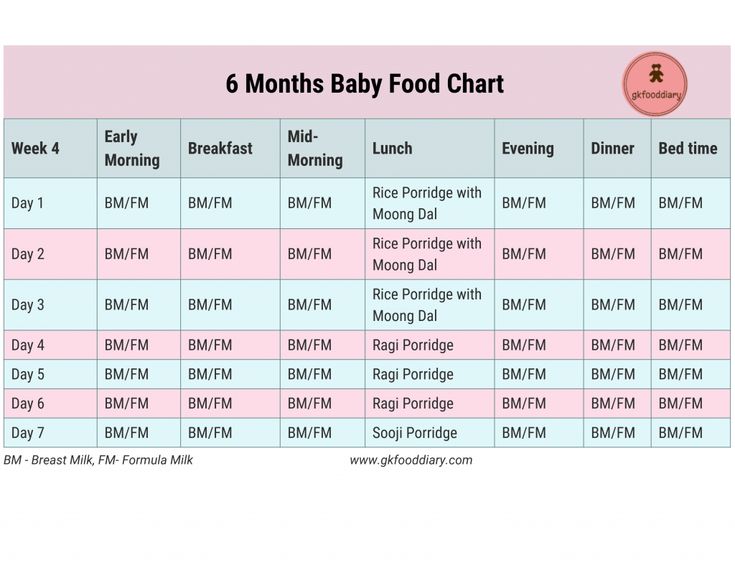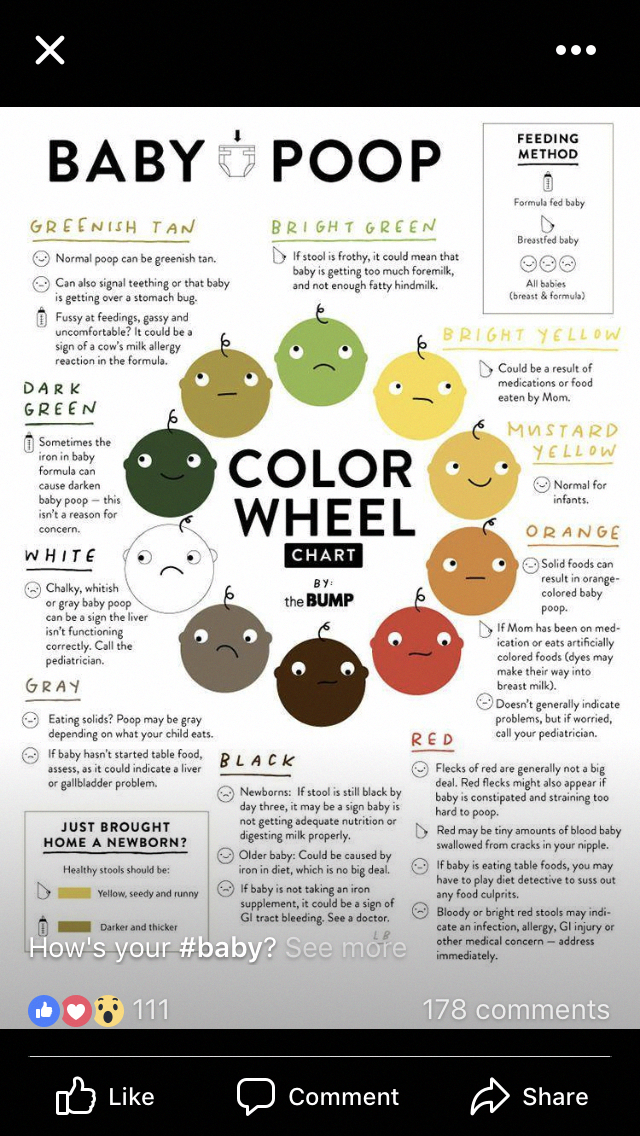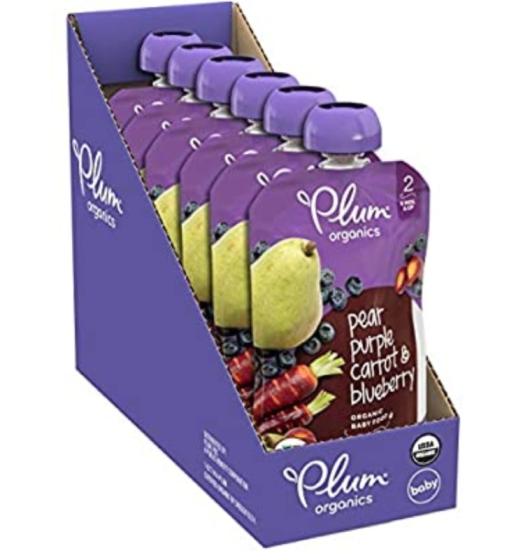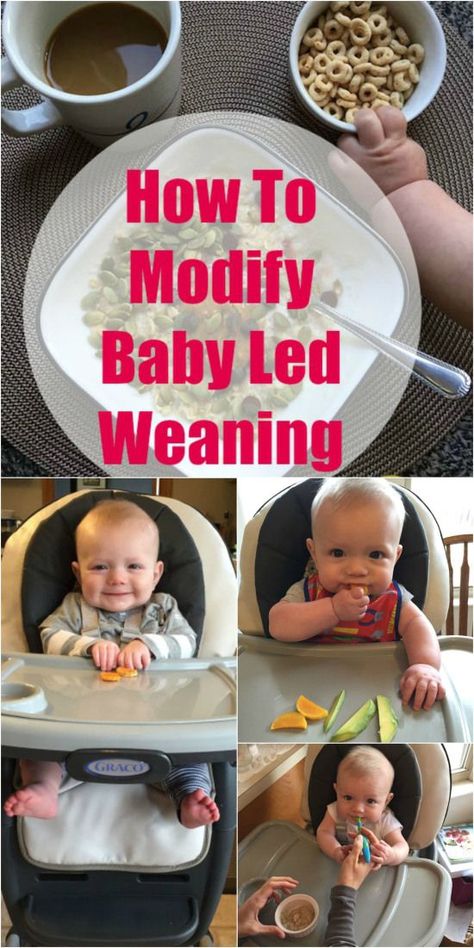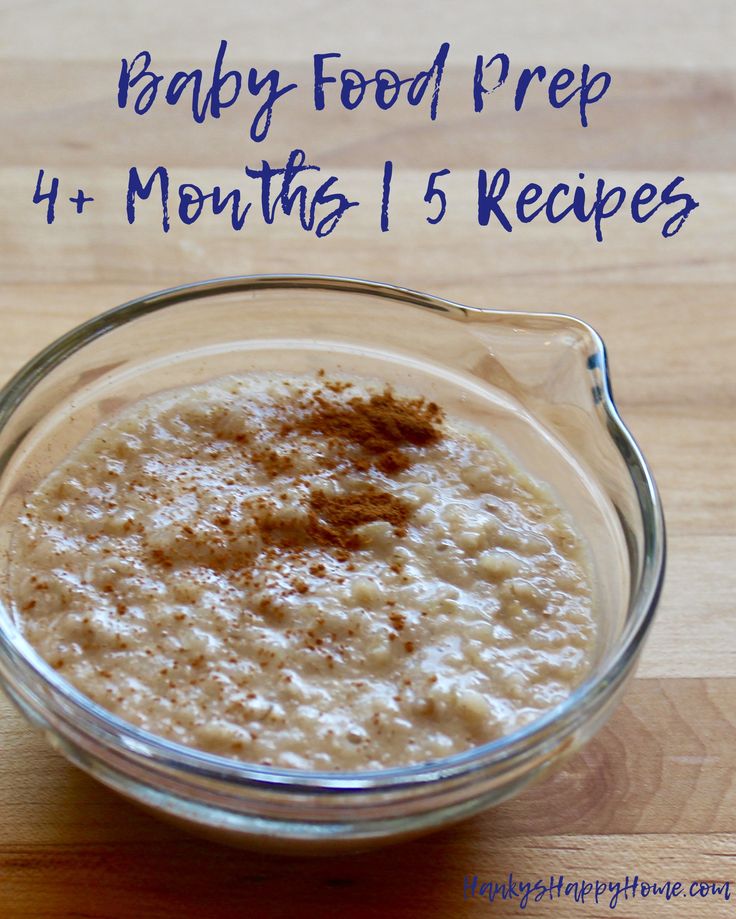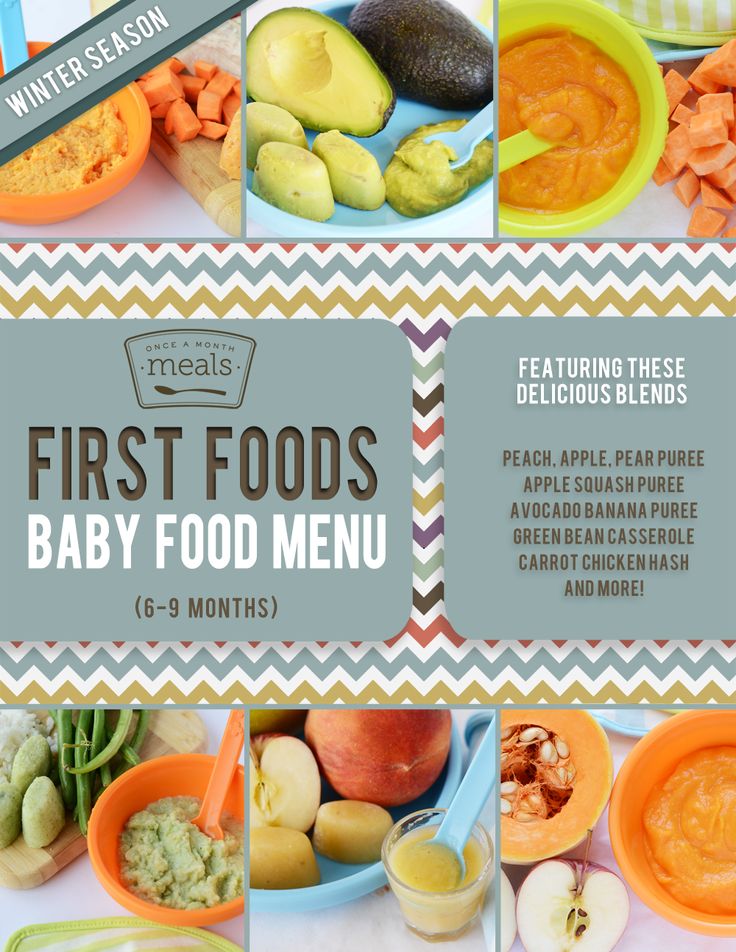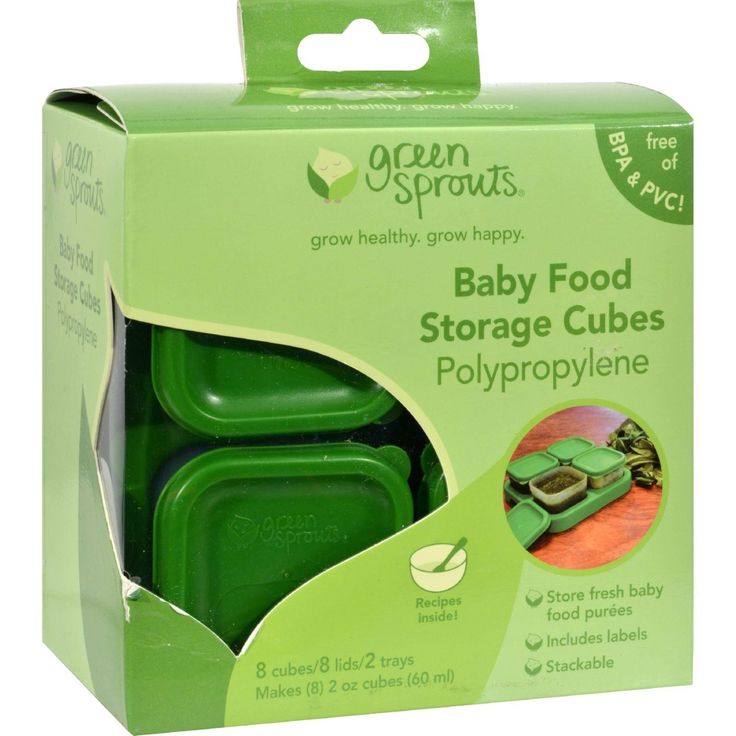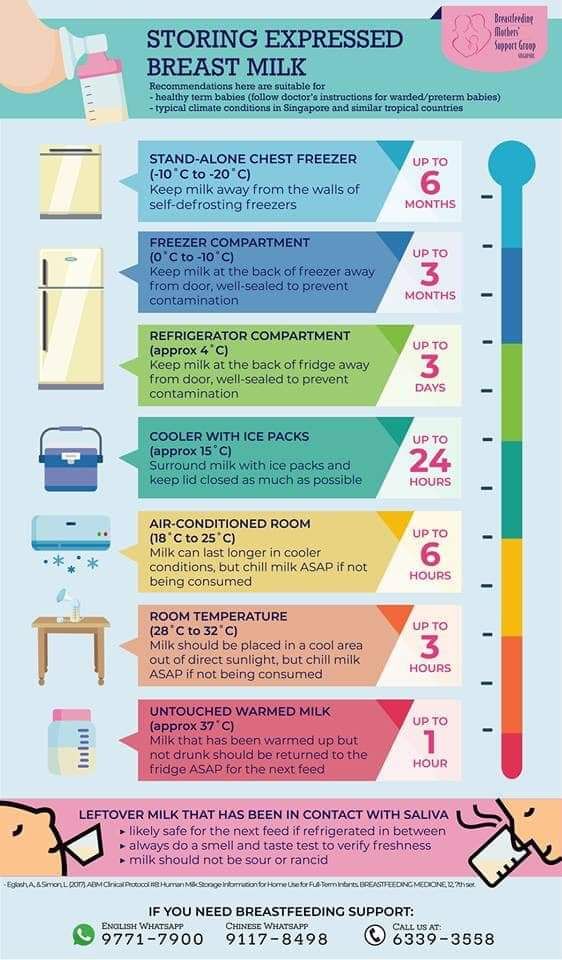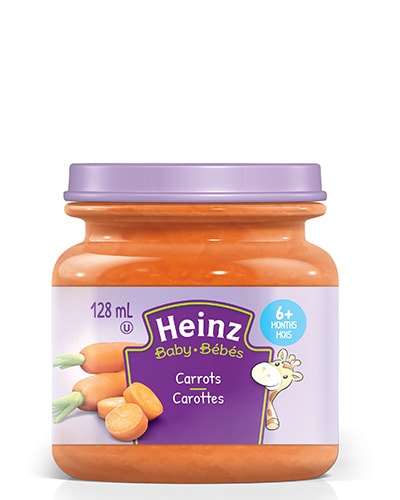Below 6 months baby food
BABY FOOD CHART 0-6 MONTHS
Your baby is your lifeline. Every parent desires a healthy and happy baby and takes every exertion possible to achieve this too. Baby’s growth and development amongst others chiefly depends on her food intake. They say “We are what we eat” and baby is no exception to this adage.Parents and more so the first-timers are often anxious on what to feed and what to keep away from baby’s daily food intake. It takes a while to get the hang at the art of parenting and feeding. Here’s where this article BABY FOOD CHART 0-6 MONTHS helps. It may also interest you to read : Best formula foods for kids in india sathu mavu ingredientsHealthy food can be real
- Table of Content
- Baby’s First Year
- Baby’s physical development during the first year:
-
All this fast paced development necessitates a healthy, nutritious and fulfilling diet too.
- Food to Baby:
- What not to offer to baby during the first year -BABY FOOD CHART 0-6 MONTHS
- BABY FOOD CHART 0-6 MONTHS
- Undermentioned are suggestive food charts for babies in the age group of 0-6 months:
- New Born BABY FOOD CHART 0-6 MONTHS
- 1-3 Months old baby’s food chart:
- 3-6 Months old baby’s food chart:
- Certain signs that tell you your baby is ready to have food besides milk is as under:
- Tips while feeding baby:
- What can be baby’s first food?
- BABY FOOD CHART 0-6 MONTHS
- Baby’s food chart at 3-6 months may comprise of the following:
Human babies are something of an engineering marvel! From being a helpless miniscule infant to one that’s almost unrecognisable at the end of the first year of birth, human babies undergo an incredible transformation. From just lying down on their back and sleeping almost 18 hours at birth to turning into a walking and sometimes even talking marvel at the end of the first year of birth babies grow and develop at an astounding pace. Each baby achieves growth milestones at their own pace during the first year of birth; some getting mobile sooner than others and some developing a semblance to a reasonable language and vocal skill far earlier than their counterparts. From being an infant whose staple diet is milk to getting up to eating semi-solids and solids (in some cases) infants pass through an incredible gastronomical journey during the first year of their lives. So it becomes vital to understand what and how to feed babies during the course of their first year post-birth. In this two-part article, I take you through the dos and don’ts at feeding and food charts for baby during the course ofthe first year of her life.
From just lying down on their back and sleeping almost 18 hours at birth to turning into a walking and sometimes even talking marvel at the end of the first year of birth babies grow and develop at an astounding pace. Each baby achieves growth milestones at their own pace during the first year of birth; some getting mobile sooner than others and some developing a semblance to a reasonable language and vocal skill far earlier than their counterparts. From being an infant whose staple diet is milk to getting up to eating semi-solids and solids (in some cases) infants pass through an incredible gastronomical journey during the first year of their lives. So it becomes vital to understand what and how to feed babies during the course of their first year post-birth. In this two-part article, I take you through the dos and don’ts at feeding and food charts for baby during the course ofthe first year of her life.
The first year in your baby’s life holds significance like no other. The pace of growth during baby’s first year compares to none during the rest of her life. Beginning from learning how to smile to getting a hold at balancing her head and body, building up her pincer grip to turning her body over from back to tummy and vice versa and moving on to sitting upright and learning to use her limbs to crawl/glide (some babies skip this). Learning to understand language and make babbling sounds and developing the use of hands to clap and hold objects and move up to a standing position to cruising from a point to another and may be even learn to walk and develop vocabulary and pretend play antics. Phew, that’s some phenomenal quickness at physical development! Her mind’s also developing alongside and she is getting more observant of the world and her surroundings. She begins to respond and display her likes and dislikes. She begins to identify some colours and shapes and familiar faces too.
The pace of growth during baby’s first year compares to none during the rest of her life. Beginning from learning how to smile to getting a hold at balancing her head and body, building up her pincer grip to turning her body over from back to tummy and vice versa and moving on to sitting upright and learning to use her limbs to crawl/glide (some babies skip this). Learning to understand language and make babbling sounds and developing the use of hands to clap and hold objects and move up to a standing position to cruising from a point to another and may be even learn to walk and develop vocabulary and pretend play antics. Phew, that’s some phenomenal quickness at physical development! Her mind’s also developing alongside and she is getting more observant of the world and her surroundings. She begins to respond and display her likes and dislikes. She begins to identify some colours and shapes and familiar faces too.
All this fast paced development necessitates a healthy, nutritious and fulfilling diet too.

Her diet needs to keep pace and matchup to the growth and maturity of her internal and external organs. As her teeth and stomach coupled with her digestion grow and improve her diet needs to move on from chiefly liquid to semi solid and thereafter a regular solid adult-like diet (keeping baby’s development and any special health requirements in mind).
Food to Baby:One of the most common queries that you face as a parent would relate to food. You are generally uncertain about what, how much and when to offer food to your baby. Every baby and parent is one-of-a-kind. What works in a family may not be the rule of thumb for another. Some parents introduce food and top feed (besides mother’s milk) as early as 4 months and some others wait until 6 months to do the same.
What not to offer to baby during the first year -BABY FOOD CHART 0-6 MONTHSMentioned under is the list of what not to offer to your baby during her first year (unless otherwise instructed by her Pediatrician):
- Honey
- Cow’s Milk and Soy Milk
- Fruit juice especially citrus fruits
- Refined Grains
- Unpasteurized Foods
- Sugar and Sugar rich foods including chocolates and candies
- Meat and Fish
- Allergenic Foods
- Citrus fruits and berries
- PeanutButter
- Egg
- Nitrate rich vegetables
BABY FOOD CHART 0-6 MONTHS
Undermentioned are suggestive food charts for babies in the age group of 0-6 months:New Born BABY FOOD CHART 0-6 MONTHS A baby’s stomach is the same size as her fist. There’s absolutely nothing better than breastmilk for a new born baby. Breast milk has the right nutrients that baby needs during her first few months after birth. Breastmilk also contains anti bodies that build up a new born baby’s immune system and is light on her tummy. Breastfeeding mums must however watch their diet and food intake and prefer home cooked meals over outside food. Mums must also ensure to eat regularly and not worry about their pregnancy weight loss. In some cases when breast milk production is insufficient or when baby is not gaining enough weight or hungry even after a breastfeed, or when mum is unavailable to feed baby for any reason, her Pediatrician may recommend giving Formula milk or any other substitute to baby. In such cases parents are to supplement baby’s milk intake as directed by her physician. Baby’s milk intake increases as she grows and as her digestive system matures.
There’s absolutely nothing better than breastmilk for a new born baby. Breast milk has the right nutrients that baby needs during her first few months after birth. Breastmilk also contains anti bodies that build up a new born baby’s immune system and is light on her tummy. Breastfeeding mums must however watch their diet and food intake and prefer home cooked meals over outside food. Mums must also ensure to eat regularly and not worry about their pregnancy weight loss. In some cases when breast milk production is insufficient or when baby is not gaining enough weight or hungry even after a breastfeed, or when mum is unavailable to feed baby for any reason, her Pediatrician may recommend giving Formula milk or any other substitute to baby. In such cases parents are to supplement baby’s milk intake as directed by her physician. Baby’s milk intake increases as she grows and as her digestive system matures.
Pediatricians all over the world agree that children should be exclusively breastfed until 6 months of age from birth. Even the World Health Organisation (WHO) has produced guidelines in this regard. However there are certain households that start solid food for babies that are less than 3 months of age. It is however to be understood that such an early start at solid foods puts the baby at a risk of developing food allergies. Baby’s young digestive system is still immature to handle solid food in any form.Breastmilk contains all the nutrients that are required for the physical and mental development of baby until the age of 3 months. Mothers may sometimes be concerned about inadequate milk production. Unless your doctor mentions this be assured that you are producing sufficient milk to meet baby’s needs. Also your milk production depends on baby’s demands. The more you feed the more milk you shall make too but however if for any reason you are to give top feed to baby, then go as advised by your Pediatrician. Exclusively breastfed baby’s milk intake from 0-6 months should roughly be as under mentioned:
Even the World Health Organisation (WHO) has produced guidelines in this regard. However there are certain households that start solid food for babies that are less than 3 months of age. It is however to be understood that such an early start at solid foods puts the baby at a risk of developing food allergies. Baby’s young digestive system is still immature to handle solid food in any form.Breastmilk contains all the nutrients that are required for the physical and mental development of baby until the age of 3 months. Mothers may sometimes be concerned about inadequate milk production. Unless your doctor mentions this be assured that you are producing sufficient milk to meet baby’s needs. Also your milk production depends on baby’s demands. The more you feed the more milk you shall make too but however if for any reason you are to give top feed to baby, then go as advised by your Pediatrician. Exclusively breastfed baby’s milk intake from 0-6 months should roughly be as under mentioned:
| Baby Age (in months) | When to feed | Quantity per feed (ml) |
| 0-1 | Every 2 hours or on demand | 60-120 |
| 1-4 | Every 2-3 hours | 120-210 |
| 5-6 | Every 3-4 hours | 107-125 |
Formula fed baby’s milk intake should roughly be as under mentioned:
| Baby Age (in months) | When to feed | Quantity per feed (ml) |
| 0-1 | Every 2 hours or on demand | 60-120 |
| 1-3 | Every 2-3 hours | 120-150 |
| 3-4 | Every 2. 5-3.5 hours 5-3.5 hours | 150-210 |
3-6 Months old baby’s food chart:
In most Indian households, mothers begin to partially wean off baby after they turn 4 months old. A special ceremony known as Annaprashanis also performed that formally starts the introduction of food besides milk. Mothers may even begin to substitute one milk feed per day from breastmilk to formula (proceed as directed by the physician). Mums must closely watch their infant’s intake to understand if they need any food besides milk. Generally babies begin to show signs of additional food intake besides milk and it is well reflected in their weight and readiness to accept any food besides milk. This time is also considered good to introduce babies to different foods and watch out for their reactions and body acceptance of the same. Mums can talk in detail with the child’s Pediatrician to well understand how and when to introduce food besides milk to her infant.
- Baby’s learnt to hold her neck and sit with adequate back support (this minimizes the risk of choking)
- Baby seems hungry even after a milk feed and her weight is not improving as required
- Baby seems eager to try new foods and watches you closely when you eat
- Baby opens her mouth and reacts to food that’s brought close to her mouth
- Always keep all feeding supplies handy such as bibs, wet wipes/napkins, feeding utensils and spoons etc. even before you begin to feed baby
- Always harness baby if you seat her upright in a high chair/baby feeding chair
- Never leave baby unattended in between a feed
- Do not force baby to eat if she is averse to the food being offered
- Do not overfeed
- Feed a single grain food at a time only
- Keep a gap of at least 3 days in between new foods introduced to baby
What can be baby’s first food?
Doctors generally recommend starting fruit as baby’s first food, with the exception of citrus fruits (that are acidic in nature). Generally boiled, mashed and pureed fruit pulp such as apple puree can be offered to infants after they turn 4 months old. Baby may take just a few spoons in the beginning. If she shows an aversion to a particular food, then do not offer the same until after a few weeks. Even if baby is tempted to eat more, stick to giving her a limited quantity only in the beginning. And also watch out for any allergic reactions. Discontinue a food immediately if you suspect an allergy and contact your Pediatrician for the next course of action.
Generally boiled, mashed and pureed fruit pulp such as apple puree can be offered to infants after they turn 4 months old. Baby may take just a few spoons in the beginning. If she shows an aversion to a particular food, then do not offer the same until after a few weeks. Even if baby is tempted to eat more, stick to giving her a limited quantity only in the beginning. And also watch out for any allergic reactions. Discontinue a food immediately if you suspect an allergy and contact your Pediatrician for the next course of action.
BABY FOOD CHART 0-6 MONTHS
Baby’s food chart at 3-6 months may comprise of the following:- Breast milk/ Formula (if advised)
- Pulses water/Pulses soup, particularly use Moong Dal as it’s easy to digest and does not make baby colicky
- Mashed and boiled fruits such as apples, mangoes and bananas
- Fruit purees, without added sugar
- Well cooked, mashed and pureed vegetables/soups that are of semi solid or liquid consistency
- Single grains such as pulses, raagi, oats etc.
 that are easily digestible
that are easily digestible
The table below can serve as a suggested feed chart for baby. Do however seek your doctor’s advice and proceed accordingly while feeding baby:
| Time | What to feed |
| 5 A.M. | Breast Milk/Formula whatever you feed baby with (and generally baby goes back to sleep at this hour after a feed) |
| 7 A.M. | Breast Milk/Formula-generally babies play for a while at this hour especially if you have older children and then take a small nap again |
| 9 A.M. | Breakfast-you may serve fruit purees (without sugar) or boiled and mashed fruits. Any new food that you wish to introduce your baby to, must be done at this time only. You will be able to assess reaction (if any) to a new food and baby will be better receptive to try on a new food after a good night’s sleep and rest |
10.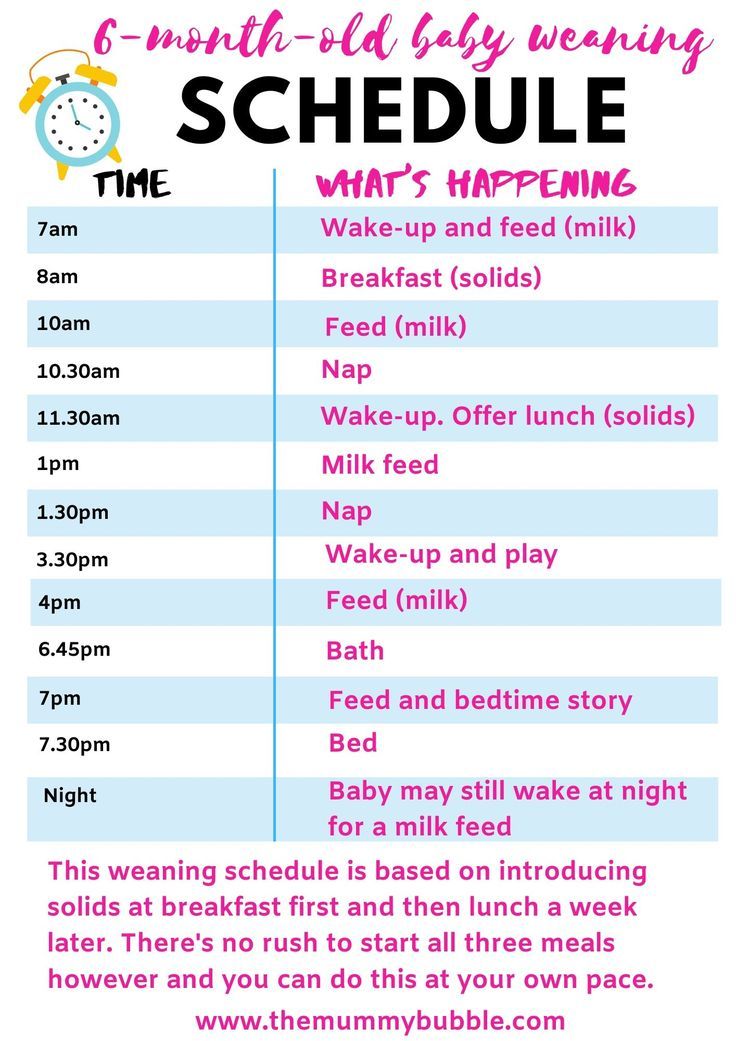 30 AM. 30 AM. | After a massage and bath, babies are generally sleepy by this time; you should give them breast milk/formula feed. Baby can be fed through a bottle/or by any other means that you are using |
| 1 P.M. | Baby will wake up hungry after a nap and this is a good time to serve lunch in the form of pulses soup/single grains such as ragi, oats etc. If baby is taking on semi solids you may even try start feeding rai balls, porridge, halwa etc. You may also give small quantities of unsweetened yogurt to baby.If you have introduced meat then pureed meat can also be given |
| 2.30 P.M. | Baby will want to have breast milk/formula before going to sleep In the afternoon |
| 4 P.M. | Once baby is up from her nap, you may feed her soup/boiled vegetable purees |
| 5 P.M. | You may massage baby and also offer her some simple finger foods/iron fortified cereals that are diluted in consistency etc. There are baby finger food packs readily available in the market or you may even make them at home |
6. 30 30 | Some babies may take a small half hour nap after their massage and once they are up you may feed them breast/formula milk. Try and give a quantity lesser than the usual feed so as to make room for a semi-solid meal later |
| 8 P.M. | At this hour if baby is not too tired and you have introduced her to more than a single grain, you may give her khicadi, dalia, ragi. If baby is colicky then stick to a single grain |
| 10 P.M. | This should be a milk feed. If you have started to give formula, then prefer giving her formula so that she stays full for longer and you may also get a few hours of sleep at a stretch |
| Sleep time feeds | During night baby may get up between 1-3 times. Do feed as per demand, unless instructed otherwise by the doctor |
Also an important point to remember is that any food besides milk that is introduced during the 1st year is only a supplement and milk forms the core of baby’s diet during her first year. So mums must actively breastfeed babies during this time. The first year of a baby’s life is to explore and introduce new tastes besides milk and do remember that as baby grows her tastes and food preferences will keep evolving and changing. Generally babies must triple their birth weight at the end of their first year and then you can be sure that baby is doing well in terms of her growth and nutrition. What must and must not form part of your baby’s food intake is to be solely discussed and finalized by your child’s Pediatrician. And food suggestions made in the article are to be taken as suggestions only and given to baby in consultation with the baby’s Pediatrician.
So mums must actively breastfeed babies during this time. The first year of a baby’s life is to explore and introduce new tastes besides milk and do remember that as baby grows her tastes and food preferences will keep evolving and changing. Generally babies must triple their birth weight at the end of their first year and then you can be sure that baby is doing well in terms of her growth and nutrition. What must and must not form part of your baby’s food intake is to be solely discussed and finalized by your child’s Pediatrician. And food suggestions made in the article are to be taken as suggestions only and given to baby in consultation with the baby’s Pediatrician.
Share this post
Rupal Mohta
Rupal is a Company Secretary by profession. She’s mum to little angels and is passionate about writing. She’s keen on learning new skills; be it gardening or photography and you may catch her clicking silly selfies with her kids on a free day!
6 months baby food chart with baby food recipes
By Swasthi on August 6, 2022, Comments,
6 months baby food chart with baby food recipes. The best time to start solids for babies is after 6 months. There are many sources suggesting introduction of solids from 3 to 4 months. But an early introduction of solids can lead to more colic, digestive troubles and allergies.
The best time to start solids for babies is after 6 months. There are many sources suggesting introduction of solids from 3 to 4 months. But an early introduction of solids can lead to more colic, digestive troubles and allergies.
A baby develops digestive enzymes in between 4 to 6 months which are crucial for digestion of foods. It is a good choice to wait until the baby develops these enzymes completely.
A baby typically begins to develop head control from 3 to 4 months and gains strong head to neck muscles by 6 months. A strong head to neck control helps the baby to accept solids well and can easily swallow.
So by 6 months a baby has a better digestive system and a good head control which are needed before the introduction of solids.
Breast milk is the best bet for the overall growth of a baby. It is recommended to exclusively breast feed a baby for the first 6 months.
As an exception, formula milk is an alternate for women who cannot breast feed baby due to professional, personal or medical reasons.
If you have a baby older than 7 months, you can follow this complete
baby food chart for 8 months old and above
How do you know your baby is ready for solids?
1. The baby’s head & neck are stable. This means baby can accept food and swallow.
2. Baby must be able to sit stable with or without support.
3. Shows interest in food when others are eating.
4. Baby must be able to open the mouth when food is offered.
5. Baby is still hungry after breastfeeding or formula feed.
Tips on how to start solids for baby
First consult your pediatrician to confirm if your baby is ready for solids. It is very important to plan well before you introduce any other foods apart from breast milk.
Make your own feeding schedule along with the foods you intend you try and get an approval from your pediatrician. Most clinics and hospitals also provide a diet chart or at least a guide.
I have made this from the guidelines I got from the Clinics here in Singapore.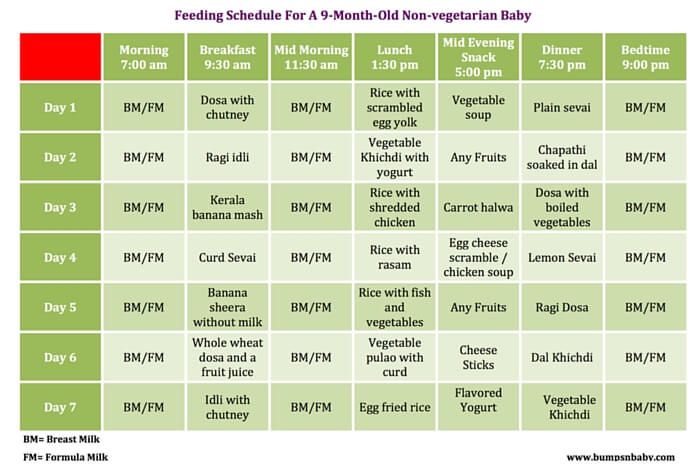 I have followed the same for both my babies.
I have followed the same for both my babies.
1. Always start with a single food. Either a fruit, vegetable or grain. Avoid a mixture of foods. You can start with mashed fruit first. The presence of digestive enzymes in fruits helps the baby to digest them better.
2. After a week, while you continue feeding fruit, you can start rice water (kanji), after a week clear dal soup or boiled vegetable broth / water.
3. Always follow the 3 day wait rule for every food you introduce. Wait for the results until the 4th day. Please see the doctor immediately if your baby develops rashes, runny nose, watery eyes, colic etc.
4. Introduce new foods to your baby during breakfast or lunch. Avoid trying new foods during the later time of the day as it is easy to get a control over the problems.
5. A 7 month old baby can eat only a tsp of mashed food initially. Slowly by 4 weeks increase the quantity to a tbsp and then more.
Helpful tips – introducing solids for baby
1.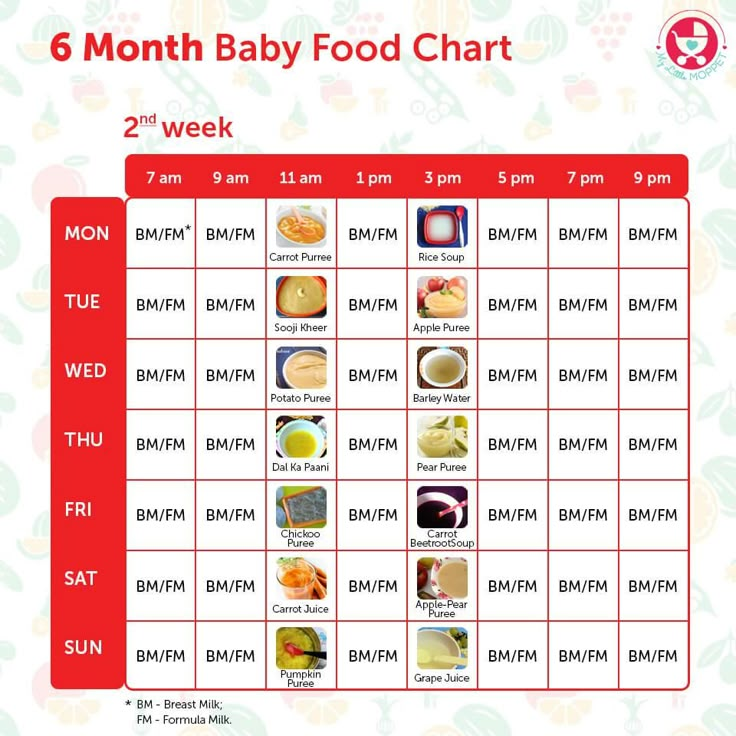 Use stainless steel or glass bowls and cups for preparation of baby foods. Avoid plastic ware even made of any superior material, including virgin plastic or graded as BPA free. Any kind of plastic ware consists of plasticizers that are used to make the containers flexible.
Use stainless steel or glass bowls and cups for preparation of baby foods. Avoid plastic ware even made of any superior material, including virgin plastic or graded as BPA free. Any kind of plastic ware consists of plasticizers that are used to make the containers flexible.
Plasticizers are similar to BPA and are an endocrine disruptor. Even BPA free plastic and virgin plastic ware have chemical plasticizers. Please use google search for more info.
2. Always feed the baby in a calm, quite environment and in a steady place like – on the lap, in a high chair or on the floor.
3. While feeding, refrain the baby from activities like watching a TV show, playing with a hand held gadget like mobile, and tablet or game devices. Some of these emit radiation that is not good for the baby.
4. Meal time has to be a learning for the baby, speaking to your baby about the food – its texture, taste and color helps the baby to develop a liking for the food. Or narrate a good story to the baby, do not encourage the baby to talk while eating.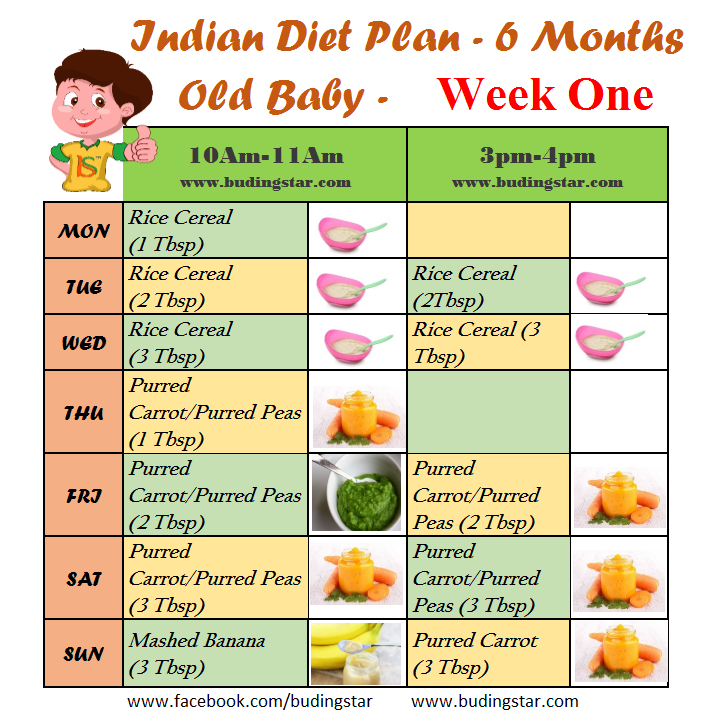 This may seem to be over disciplined but this is the only way i have found to grow fuss free kids. They will begin to love any food that is served.
This may seem to be over disciplined but this is the only way i have found to grow fuss free kids. They will begin to love any food that is served.
5. Introduce water from a steel cup or a glass not from a feeding bottle or sipper. A 90 ml cup is best suited. This makes the transition from teat to cup easy when the baby grows up.
6 months baby food chart
To follow this baby chart please ensure your baby has completed 6 months and you have an approval from your pediatrician for the same.
A baby usually consumes milk every 2 to 3 hours. Solids should be served in between the feeds. Use plain boiled and cooled water to puree the fruits if needed. Avoid mixing milk or any other ingredient with fruit.
The combination of fruit and milk products results in indigestion, loss of appetite, no weight gain and accumulation of toxins.
Clear soups can be used to make pureed rice, oats or ragi cereal. Feeding only clear soups regularly is not a good idea as they lack the nutrition that is provided by a semi solid food or milk.
I have shared a sample baby food chart below which shows the quantities of fruits and vegetables. From the chart (day 13 to day 20), you can replace potato with rice porridge (kanji) or dal soup or ragi porridge.
This is an alternate table which you can follow if your baby is in between 6 and 7 months.
| Breastfeed or formula milk. What ever time your baby wakes up. |
7.30 to 8 am fruit puree |
| One of the following: (only after 1½ to 2 hours of milk). You can use boiled cooled water to thin down the puree. 1. Banana- mash with a fork or run in a blender. 2. Apple- peel,core,steam for about 5 to 6 minutes. Puree in a blender 3. Chickoo (sapota)- mash with a fork and spoon 4. Pear- peel and core, steam for 5 to 6 minutes 5. Papaya – mash with a fork or blend 6. Ripe avocado – add it to a blender and puree |
11. 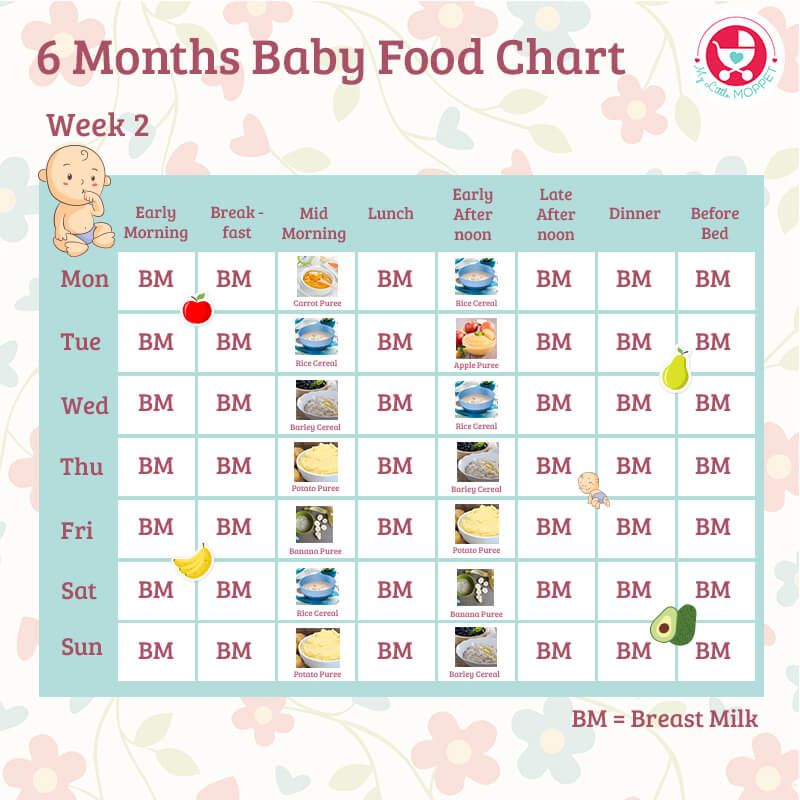 30 to 12.30 pm 30 to 12.30 pm |
| After introducing fruits, you can try these. Continue to feed fruits for breakfast. first 1 week – rice cereal 2nd week apple rice or rice cereal with boiled carrot 3rd week ragi porridge Or apple ragi or oats porridge Or apple oats Or clear moong dal soup 4th week – Repeat the foods mentioned above. You can also introduce soupy khichdi. You will have to make it following the same method I mentioned for rice cereal above. |
| Breast feed or formula (only after 1.5 to 2 hours of lunch) |
Baby food recipes for 6 months old along with ingredients and instructions to prepare
These are the quantities i followed for my kids i got from the Health Promotion Board,Singapore.Use any one
Quantity of fruits for 6 months to 9 months
½ small apple
½ small pear
½ cup sapota
½ cup papaya
½ medium banana
How many times can the same fruit be given in a week?
Including a variety of fruits will provide different kinds of nutrients to the baby.
Banana – 3 to 4 times
Apple – daily
Chickoo- daily
Pear- 3 to 4 times
Papaya – 4 to 5 times
Avocado- 3 to 4 times or daily
Do read the complete post before you attempt any of these recipes
More tips on preparing Lunch
from 3 rd week – Rice, ragi or oats. Clear dal soup with veggie.
first 7 days (from 3rd week) -Single grain with milk (formula or breast milk). You can also use gluten free or baby oats or ragi to make porridge.
next 7 days – Rice with a single veggie or apple. You can use steamed or boiled carrots.
VEGETABLES to prefer
1. carrots
2. pumpkin
LENTIL/ DAL to prefer
1. moong dal
2. toor dal
About Swasthi
I’m Swasthi Shreekanth, the recipe developer, food photographer & food writer behind Swasthi’s Recipes. My aim is to help you cook great Indian food with my time-tested recipes. After 2 decades of experience in practical Indian cooking I started this blog to help people cook better & more often at home. Whether you are a novice or an experienced cook I am sure Swasthi’s Recipes will assist you to enhance your cooking skills.
Whether you are a novice or an experienced cook I am sure Swasthi’s Recipes will assist you to enhance your cooking skills.
Follow Swasthi’s Recipes
Sign up to receive awesome Swasthi’s Recipes in your inbox *
Popular Recipes
Featured Recipes
Infant formula for newborns (0 to 6 months) | Baby food for babies
This is a complete baby food from the birth of a baby. If breastfeeding is not possible for some reason. Products for the smallest are called adapted, because their composition is as close as possible to mother's milk.
In the article we will talk about how to choose baby food for babies. Let's talk about what mixtures are for newborns, how to choose the right one, and how to understand that it did not fit. And also about the correct transition from one mixture to another. nine0003
nine0003
Classification: first select the type of mixture
Baby food should be recommended by a pediatrician. Be sure to check with a doctor who knows your child. The pediatrician will take into account all the factors influencing the choice: the age of the baby, the characteristics of his health, the method of birth - naturally or through a caesarean section, the date on which he was born, the weight of the child, the risk of allergies.
Healthy babies who were born at term naturally have a digestive system that is mature for their age. They are prescribed regular baby food, which is produced according to the standards established by the Ministry of Health, which means it contains all the necessary nutrients. It is important for parents only to monitor the timely change of stage. After all, babies from six months need a different composition, which is present in products labeled with the number two. nine0003
Manufacturers of adapted formulas for newborns compete in only one indicator - the proximity of the composition to breast milk.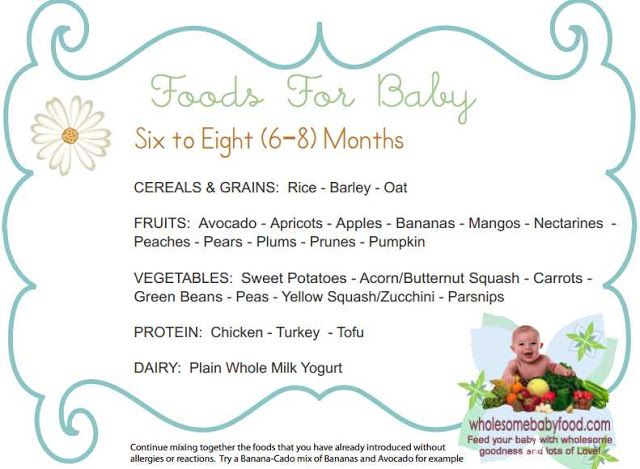 For example, the latest discovery of scientists made it possible to add oligosaccharides of mother's milk to it. They are involved in the formation of the child's immunity, which, as you know, the mother transmits when she breastfeeds. At the end of 2019, such products are considered the closest to breast milk.
For example, the latest discovery of scientists made it possible to add oligosaccharides of mother's milk to it. They are involved in the formation of the child's immunity, which, as you know, the mother transmits when she breastfeeds. At the end of 2019, such products are considered the closest to breast milk.
Under the Materna brand, this is Materna Gold HM-O. nine0003
Read more about breast milk oligosaccharides in our article.
By age
All baby food is usually divided into age stages:
- Stage 0 - for premature babies (but not all brands have this stage)
- Stage 1 - 0 to 6 months
- Stage 2 - 6 to 12 months
- Stage 3 - from 12 months
The mixture can be fed up to 1.5-2 years. By this time, the children are completely switching to adult food. You can supplement at night if the baby wakes up to eat. Or cook baby cereals on them. They are very nutritious and enriched with additional vitamins. Children who do not eat well are sometimes supplemented with formula. Some manufacturers create stage 4 products just for such cases. nine0003
Children who do not eat well are sometimes supplemented with formula. Some manufacturers create stage 4 products just for such cases. nine0003
There are products that are not age-labeled. This is a special diet that is prescribed by a doctor according to indications. The packaging must indicate at what age it can be used.
Composition
By composition, products for newborns can be divided into classic and enriched.
- Classic . The Materna line includes Materna Classic, Materna Gold and kosher dairy products Materna Mehadrin. They are usually suitable for all healthy children. After all, these products are created according to the norms of the Ministry of Health and contain all the necessary components for the nutrition of babies. nine0026
- Enriched . - This is a classic diet, supplemented with vitamins and trace elements. Materna has Materna Extra Care. This product has been the most popular among our customers and around the world.
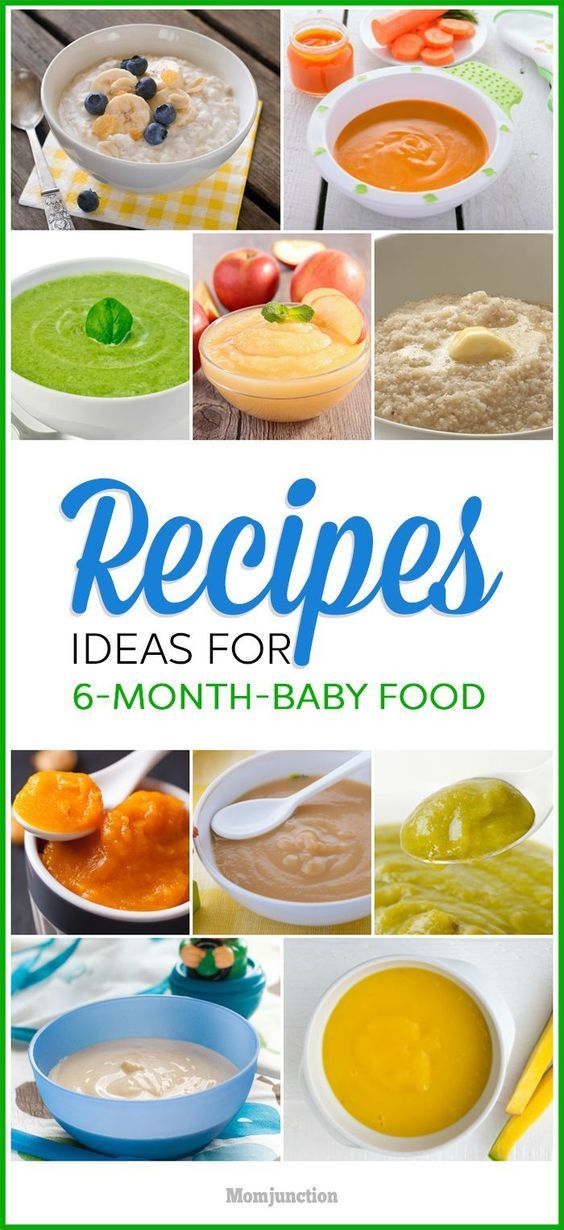 In 2017, for example, he was recognized as the best in Israel. Now the leading place is occupied by Materna Gold, as the product closest to breast milk.
In 2017, for example, he was recognized as the best in Israel. Now the leading place is occupied by Materna Gold, as the product closest to breast milk.
As intended
Separately, we can talk about special baby food, which is prescribed by a doctor in accordance with the health characteristics of the baby. It can be both basic for the child and recommended for the period of illness or recovery after it. Let's look at the main types of special mixtures. nine0003
- Low lactose . Recommended for children diagnosed with dysbacteriosis or other digestive disorders. In the case when the enzymes in the intestines are not enough to digest milk sugar - lactose. In the Materna line, this is Materna Comfort.
- Lactose free . They are used in case of congenital lactase deficiency or galactosemia, a disease characterized by the inability to absorb certain carbohydrates. This is a very rare case. If lactase deficiency appeared against the background of indigestion, then a low-lactose product is most likely suitable.
 So the body is more likely to start producing its own lactase enzyme. Be sure to discuss this with your doctor. Materna Soy is a soy lactose-free product in the Israeli baby food line. nine0026
So the body is more likely to start producing its own lactase enzyme. Be sure to discuss this with your doctor. Materna Soy is a soy lactose-free product in the Israeli baby food line. nine0026 - Dairy-free . They are prescribed for allergies to lactose and milk protein casein. In such products, animal protein is replaced by vegetable protein. As, for example, in Materna Soy blend.
- Sour milk and goat milk . In fact, they are very close to the classical ones. The only difference is that the protein is in them in an easier to digest form.
- Antireflux to relieve the symptoms of severe regurgitation. They are thicker in consistency and more difficult to throw back into the baby's esophagus. Most often prescribed in addition to regular food to reduce the amount of regurgitation. nine0026
- Hypoallergenic or hydrolysed . They are created on the basis of a split protein and are prescribed to children in cases of very serious allergies.
 This product is bitter in taste, kids do not like it. Therefore, it is appointed in extreme cases, when there are no other options.
This product is bitter in taste, kids do not like it. Therefore, it is appointed in extreme cases, when there are no other options. - Night . Produced on the basis of starch, which takes longer to digest and maintains a feeling of satiety.
- For premature babies . They are high in protein and calories. They are designed to help the child quickly gain weight. After the indicators reach the norm, the baby is transferred to a normal diet. Read more about how to choose a formula for a premature baby, read here. nine0026
- Based on vegetable protein . They are used in case of allergy to animal protein casein. And they are the main food during the period of rotavirus infection, when the use of dairy products is contraindicated.
By consistency
Most baby products are dry mixes that are diluted in warm boiled water. But there are also ready-made diluted products that only need to be heated.
How to make the right choice
There is only one answer to this question - listen to your pediatrician and be aware of what is on the market. You can contact us for a free consultation.
You can contact us for a free consultation.
Zinaida Rassadina
Pediatrician, experience - 14 years
How to tell if a mixture is not suitable
Here are some signs that you need to think about changing the mixture. But it is important to understand that there are diseases that have the same symptoms. Therefore, before changing something, you need to take tests and find out the reason. And only then choose the right food. nine0003
- Baby spits up profusely in a fountain
- The stool has a liquid or foamy consistency and an unusual, often green color
- The baby is worried after eating - he suffers from colic, bloating
- Skin rash appeared
If it happens that you need to change the food, it is important to do it gradually. Read about the correct scheme for switching to a new mixture in our article.
≡ Infant formula ᐈ Baby food for newborns from 0 to 6 months
Baby food for newborns from 0 to 6 months
The ideal food for a newborn is mother's breast milk, but in some situations it is necessary to give preference to artificial feeding. Modern milk formulas are perfectly adapted to the needs of babies and are as close as possible to the natural product in composition. They contain vitamins and minerals necessary for good immunity, good health and development of the baby.
Modern milk formulas are perfectly adapted to the needs of babies and are as close as possible to the natural product in composition. They contain vitamins and minerals necessary for good immunity, good health and development of the baby.
Infant formula from 0: main types
Infant formula for infants differ in composition, consistency, method of preparation, type of milk base and additives. Parents can choose the right baby food for their baby from 0 months for complementary foods or a complete replacement for mother's milk.
- Classic formulas based on goat's or cow's milk are suitable for babies who were born healthy and do not suffer from food allergies.
- Lactose Free - Designed for infants who are lactose intolerant. nine0026
- Hypoallergenic mixtures are prescribed for babies of the first year of life who are allergic to a protein present in cow's milk.
- Medicinal mixtures are used for feeding premature babies and newborns who have constipation, frequent regurgitation, problems with the absorption of certain vitamins and microelements.
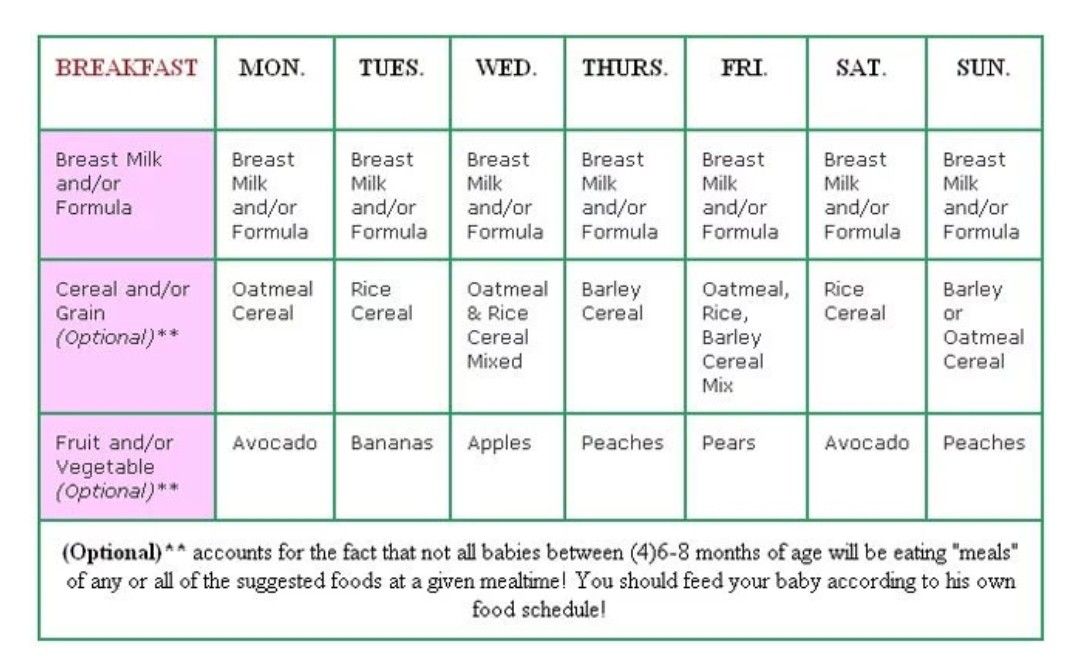
Regardless of the type, all infant formula from birth to the age of one contains the proteins, fats and carbohydrates that are needed for the full development of the child. nine0003
How to choose infant formula
To select your infant formula, use the following criteria:
- Manufacturer. It is wiser to choose products from trusted well-known brands: HiPP, NAN, Nestogen, Similac, etc.
- Child's age. Mixtures are developed taking into account the age needs of children, so be guided by the labeling: "0" - nutrition for underweight newborns, "1" - from birth to six months, "2" - up to a year, "3" and "4" - from a year and older. nine0026
- Packing type. Liquid formulas for babies are sold in tetra packs. Dry - produced in cardboard boxes or aluminum cans with a nylon lid. They are designed for long-term storage while maintaining the tightness of the packaging.
- Pack volume - 400, 600, 750, 800 g. Do not buy a large pack in order to save money, as some mixtures deteriorate quickly after opening.
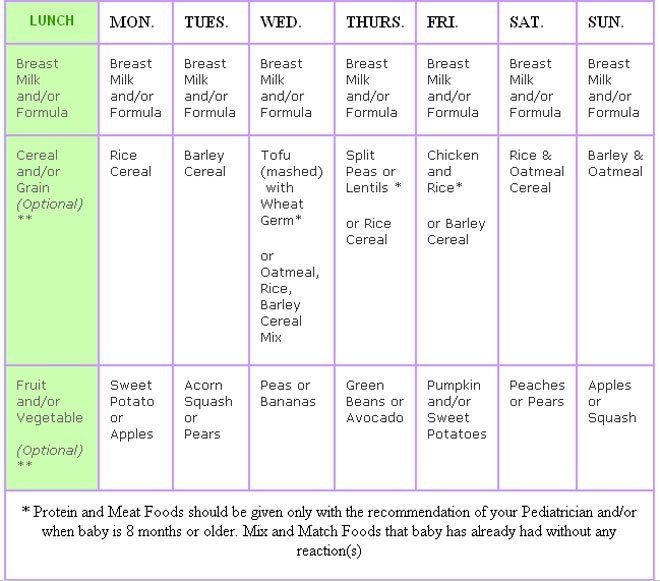
- Composition. It should not contain rapeseed and palm oil. But the presence of probiotics, prebiotics, vitamins, minerals, taurine and tryptophan will be a plus. Hypoallergenic and lactose-free products, formulas for premature babies, from goat's or cow's milk, etc. are on sale.
- Consistency. Most mixtures are dry powders for dilution with boiled water, however, there are ready-made liquid products that just need to be warmed up before feeding.
- Cost that depends on the brand, package size and features. As the baby grows, the daily consumption of the mixture will increase, so it is better to immediately choose the product at the best price.
Popular Infant Formula Manufacturers
A variety of brands and lines allows parents to purchase both premium and low cost formulas. Among the best manufacturers of budget baby food are:
- Similac is an Irish brand whose products have gained popularity due to their affordable price and high quality.
 Mixtures are presented in 4 lines: "Classic", "Premium", "Specialized" and "For premature babies".
Mixtures are presented in 4 lines: "Classic", "Premium", "Specialized" and "For premature babies". - Nestogen is a Nestle brand offering products fortified with vitamins, dietary fiber and lactobacilli.
If you are looking for premium products, we advise you to look at the Dutch brands:
- Kabrita is a brand that produces balanced baby food from 0 to 18 months based on goat's milk. There are 4 formulas in the Kabrita Gold line, corresponding to different age stages of babies.
- Friso - the company is considered one of the best in the world market. The brand offers classic and specialized dry mixes containing everything you need for healthy growth of your baby.
Infant Formula
Breastfeeding on demand does not involve adherence to schedules or norms. Another thing is when the baby is fed with a mixture: in this case, it is necessary to feed the baby up to 3 months every 2.5-3 hours, including at night.